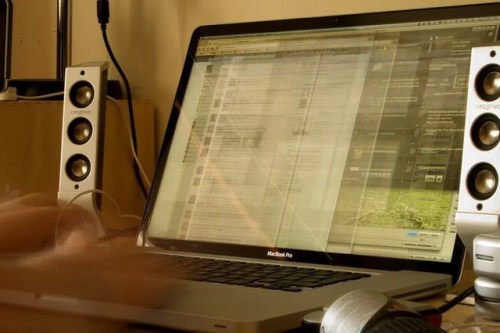Image source: https://www.flickr.com/photos/joehart/4615120857/sizes/z/
Over the past couple of years we’ve seen many changes happen in website design. As a matter of this, the industry doesn’t just change; it evolves in order to inspire and remain relevant.
This 2017, the trends are not meant to inspire, but also adjust and improve the way people perceive web design.
Virtual reality and 360 degrees video streaming
VR alone doesn’t seem that interesting in website design. But when combined with 3600 video, the visual experience of someone accessing a website is breathtaking.
The most recent promo campaign for Peugeot uses both virtual reality and 360 degree video to market the latest 208 model.
At the forefront of the trend we have Google’s Daydream; it’s a fascinating VR headset that emphasizes the way technology can adapt for every day usage. It seems that other major corporations have jumped in, as well, including HTC, Microsoft, and PlayStation.
The gadget has a very practical purpose, meaning that soon enough both 360 degree video and VR will completely alter the website design industry.
Grid layouts & card design
Pinterest was the first company to make card design layouts go mainstream. The trend is moving forward with a more dynamic grid style meant to keep cards organized, simple, and flexible; but at the same time responsive.
If you have an online business that deals with a lot of data, then you need grid layouts to keep things clean and easy to access.
Dribble, Vice and Tumblr are three of the most useful examples that use ingenious card layouts to craft fun browsing experiences and deliver content in a digestive and neat manner.
Card layouts became a fundamental part of web design when websites like Facebook and Twitter decided to adopt interfaces for their mobile and desktop sites with card-driven interfaces.
The purpose of a card layout design is to keep essential information grouped together, while at the same time compel users to perform an action.
Bots powered by artificial intelligence
As far as visuals in web design are concerned, we shouldn’t worry that bots will take the lead. However, they might have a big influence on how designers can use them to craft their websites.
Bots powered by artificial intelligence might go mainstream this 2017, thus helping companies automate online sales and communication.
Letsclap, for example, looks like a very promising product. It appeals to customers via social media channels such as Facebook Messenger, WhatsApp, and WeChat, in an attempt to provide realistic customer support.
Letsclap is a modern solution for online businesses that want to build a more personal relationship with their customer base. The platform delivers both customer service and ecommerce solutions via messaging apps.
Image source: https://www.flickr.com/photos/thecyner/9053021030/sizes/z/
Pre-built themes and websites
Today’s website design environment is moving at a very fast pace. Pre-built themes and websites are slowly but surely gaining momentum.
The goal is to help designers do their jobs a lot faster without compromising on quality. Bethemeis a platform with over 250 pre-built WordPress layouts that anyone can use at any time.
All of them are different from the WP themes we’re already used to on the WordPress website, and designers can use them to craft the most compelling pre-built websites.
Natural language interfaces
Both natural language interfaces and intuitive forms will be a big hit this 2017.
We use forms on a daily basis for bookings, sending customer feedback, subscribing, registering on websites, and more; it shouldn’t surprise us that they’ll soon become an integral part of website design.
A natural language interface can be better described as a computer human interface; an interface where linguistics fundamentals like clauses, verbs and phrases are controlled and used to create, modify and select the data within software apps.
Natural language interfaces are fundamental in interface design because they’re user-friendly and fast.
As far as intuitive forms are concerned, these are meant to help online businesses make processes easier by gathering targeted customer data.
A well-crafted intuitive form encourages a visitor to subscribe and register on a website, thus helping online businesses gather email lists and build a productive digital marketing campaign.
Web app functionalities are becoming more robust
A very interesting trend that will keep growing this year has to do with more robust functionalities for web apps.
A progressive web app can mix features from both mobile and web apps, as well as use the web ecosystem, community and plugins to provide users with a meaningful online experience.
Furthermore, these apps have become easy to develop, preserve, and deploy.
Can you imagine your website executing app functions with a single plugin, such as Tickera? Now we can instantly convert any static website into a responsive, full-bodied solution.
Web development from scratch is demanding; it takes times designers don’t have, lots of cash, and skin. But now that functionalities are more robust, it’s safe to say that the trend is here to stay.
Image source: https://www.flickr.com/photos/marcwathieu/3275706136/sizes/z/
Conclusion
Great things are about to happen this year in the website design world. Most changes are meant to ease the job of a savvy designer, and streamlining the whole process of building a site from scratch.
For your business to thrive, you should be aware of these trends. Some still need time to become exceptional, but there’s great potential; potential that needs to be fructified.
About the Author
Charles Goodwin is a regular contributor to several websites. He focuses mainly on marketing and business-related topics. In his free time, he enjoys reading business magazines.






